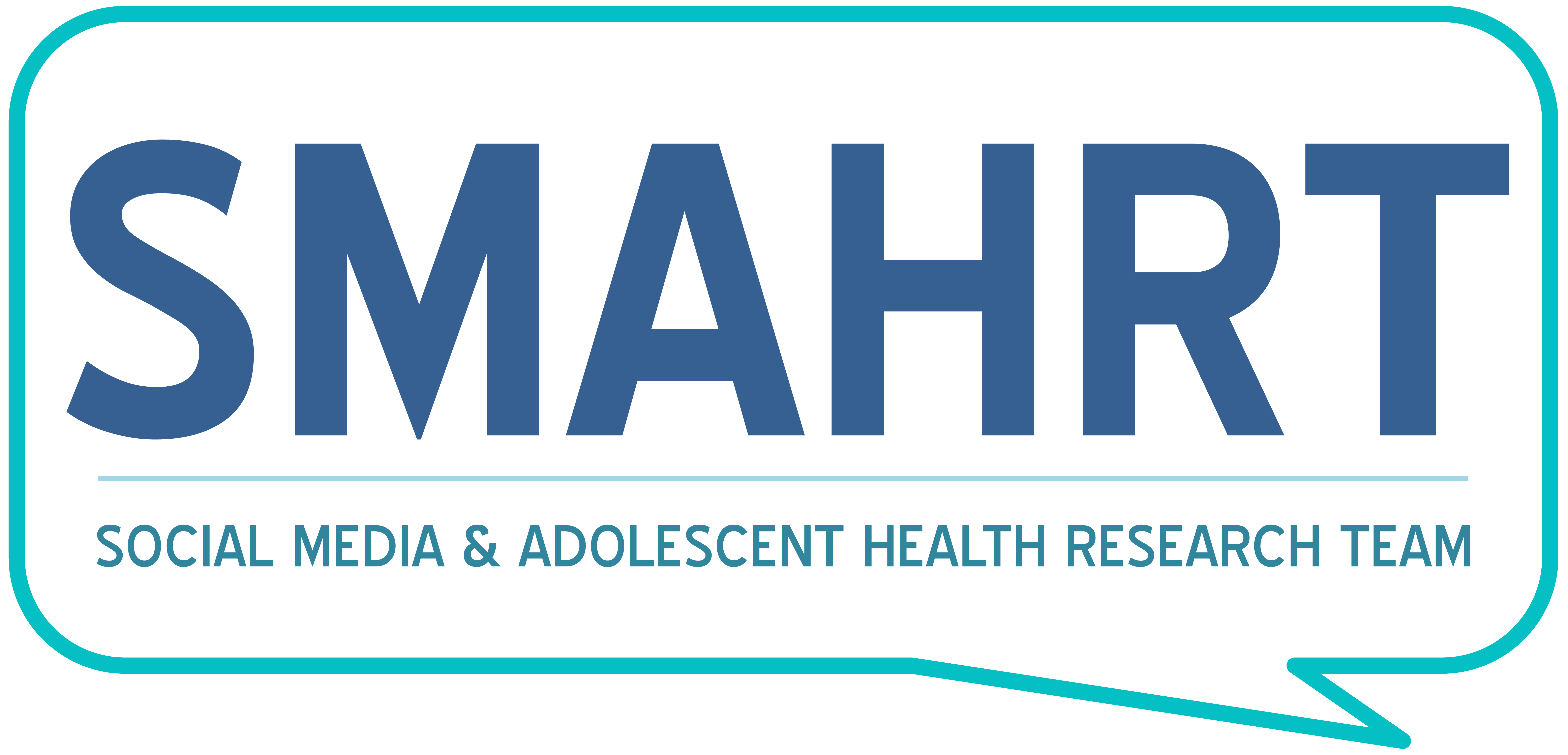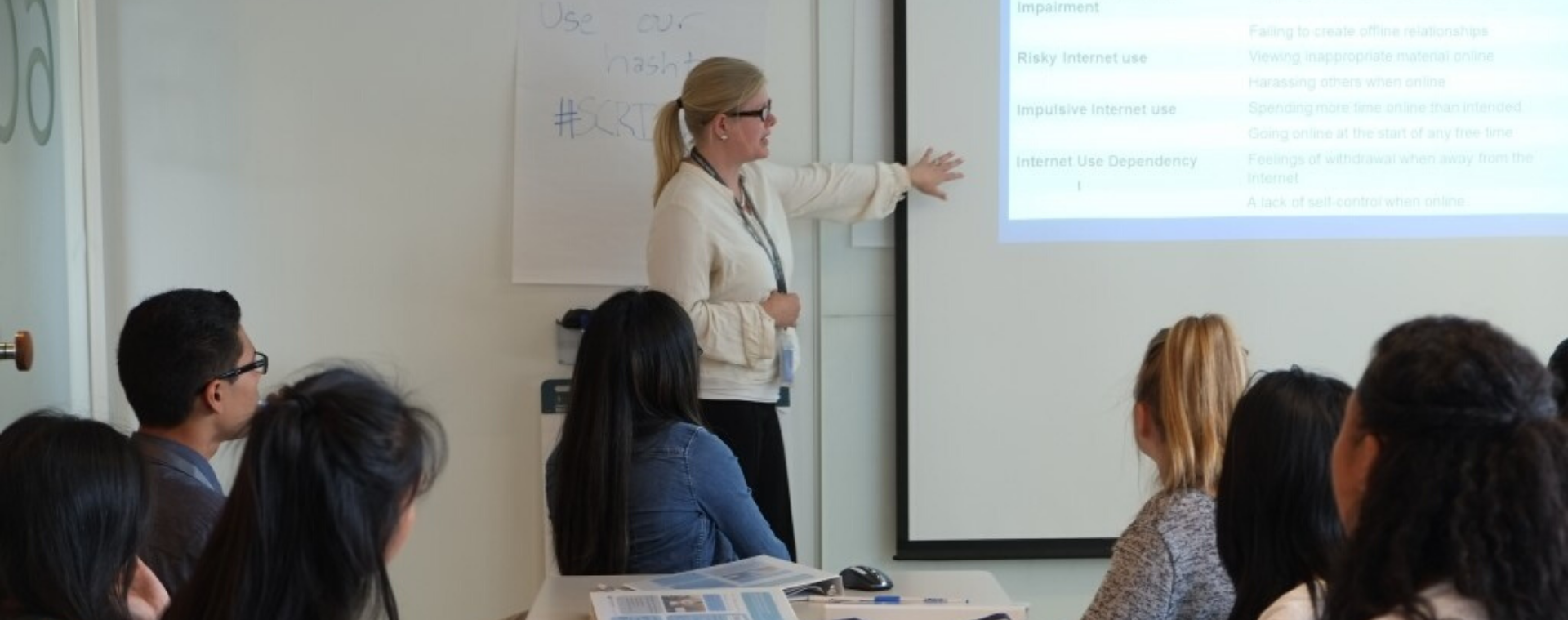The purpose of the technology use and misuse research core is to explore how technology use interacts with health outcomes relevant to adolescents and young adults, and to develop innovative methods for assessing technology use which can be used in research and clinical settings.
Technology use measurement
Technology use and health: An experience sampling approach
In this project we partnered with the University of Wisconsin Division of Information Technology (DoIT) to develop a tool to collect data using Experience Sampling Method, an innovative way in which data can be collected in real-time using text messaging. This internet use information was then linked to online survey results regarding several health measures including depression and fitness.
| Moreno, M. A., Jelenchick, L. A., Koff, R., Eickhoff, J. C., Goniu, N., Davis, A., … & Christakis, D. A. (2013). Associations between internet use and fitness among college students: an experience sampling approach. Journal of Interaction Science, 1(1), 1-8. |
| Moreno, M. A., Jelenchick, L., Koff, R., & Eickhoff, J. (2012). Depression and internet use among older adolescents: An experience sampling approach. Psychology, 3(09), 743. |
| Jelenchick, L. A., Eickhoff, J. C., & Moreno, M. A. (2013). “Facebook depression?” Social networking site use and depression in older adolescents. Journal of Adolescent Health, 52(1), 128-130. |
| Koff, R., & Moreno, M. (2013). Older adolescents’ perceptions of personal Internet use. College Student Journal, 47(2), 390-393. |
| Moreno, M. A., Jelenchick, L., Koff, R., Eikoff, J., Diermyer, C., & Christakis, D. A. (2012). Internet use and multitasking among older adolescents: An experience sampling approach. Computers in Human Behavior, 28(4), 1097-1102. |
Problematic and Risky Internet Use
Systematic review of Problematic Internet Use
This project evaluated current instruments for PIU and applied a quality tool to evaluate each. Overall quality scores were low, suggesting a theoretical based and rigorously developed assessment tool was needed.
| Moreno, M. A., Jelenchick, L., Cox, E., Young, H., & Christakis, D. A. (2011). Problematic internet use among US youth: a systematic review. Archives of pediatrics & adolescent medicine, 165(9), 797-805. |
Pilot estimation of prevalence of Problematic Internet Use
This project used Young’s Internet Addiction Test within a sample of college students from two universities and found a prevalence of 4%.
| Christakis, D. A., Moreno, M. M., Jelenchick, L., Myaing, M. T., & Zhou, C. (2011). Problematic internet usage in US college students: a pilot study. BMC medicine, 9(1), 1-6. |
Psychometric assessment of the Young Internet Addition Test (IAT)
This project assessed the use of the IAT in two samples of US college students. Results suggested the scale did not perform consistently, and suggested that new scales designed specifically for use in adolescents and young adults may be needed.
| Jelenchick, L. A., Becker, T., & Moreno, M. A. (2012). Assessing the psychometric properties of the Internet Addiction Test (IAT) in US college students. Psychiatry research, 196(2-3), 296-301. |
Problematic internet use in US young adults: Theoretical model
The purpose of this project is to develop a theoretical model of PIU in young adults using Concept Mapping and including views of both young adults and experts in the field. The goal of this model is to understand the key components and theoretical underpinnings of PIU and towards developing future intervention approaches. The model will also be used as a basis for our PIU scale.
| Moreno, M. A., Jelenchick, L. A., & Christakis, D. A. (2013). Problematic internet use among older adolescents: A conceptual framework. Computers in Human Behavior, 29(4), 1879-1887. |
Problematic internet use in US young adults: PIU scale development
To develop an assessment tool to evaluate PIU in young adults toward the goal of determining the population prevalence, identifying health risk factors and consequences, and developing screening approaches. The scale is based on underlying theoretical model of PIU.
| Jelenchick Lauren A, Moreno Megan A. The Problematic and Risky Internet Use Screening Scale (PRIUSS): A new tool for assessing problematic internet use in adolescents. Excellence in Paediatrics conference. Madrid, Spain. December 2012 |
| Jelenchick Lauren A, Eickhoff Jens, Christakis Dimitri, Moreno Megan A. The Problematic and Risky Internet Use Screening Scale (PRIUSS): A new tool for assessing problematic internet use in adolescents. Oral presentation at Pediatric Academic Society, Washington, DC, May 2013 |
Measuring technology addiction
In this study, we aimed to analyze the correlation between PIU, SMA (social media addiction), and IGD (internet gaming disorder) and to determine the extend to which demographic predictors and health implications overlap for these three tech-related addictions.
Initiation of technology use
Perspectives on smartphone ownership and use by early adolescents
In this study, focus groups of tweens were asked about smartphone ownership and social media use among their peers. Participants provided useful insights on when and how they would prefer to initiate smartphone and social media use, preference on rules, concerns, and how they use technology.
| Moreno, M. A., Kerr, B. R., Jenkins, M., Lam, E., & Malik, F. S. (2019). Perspectives on smartphone ownership and use by early adolescents. Journal of Adolescent Health, 64(4), 437-442. |

